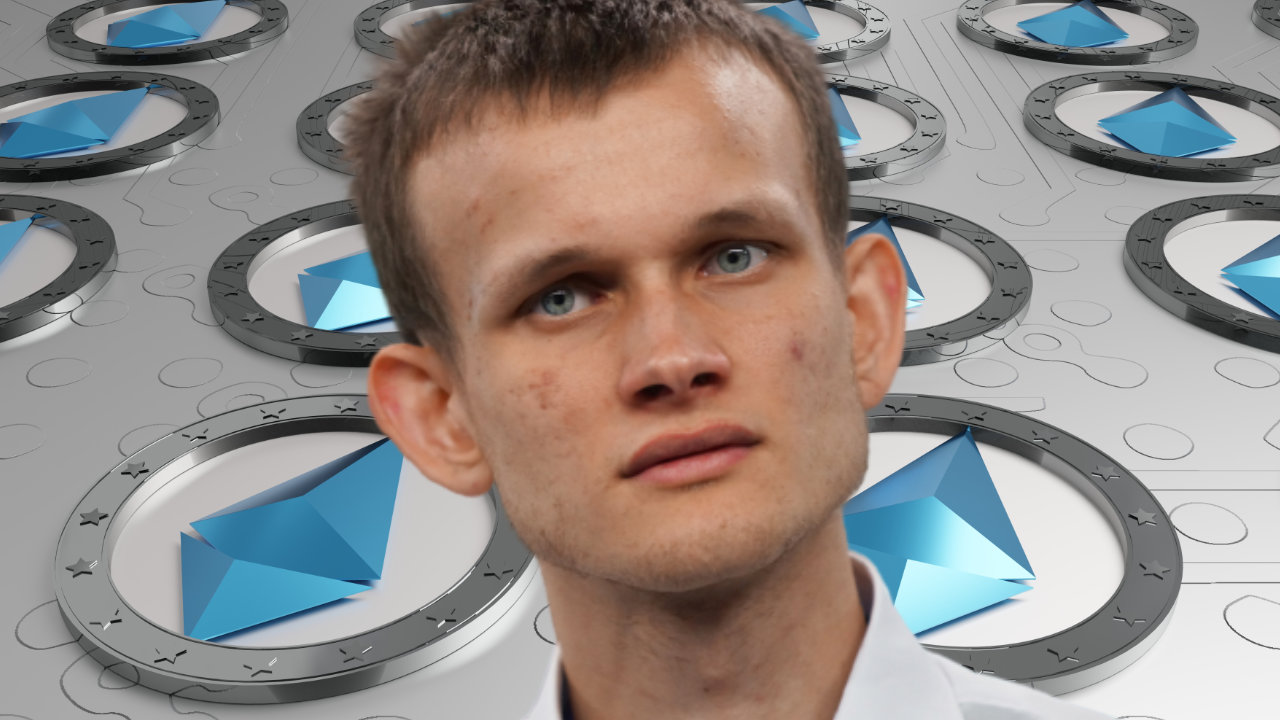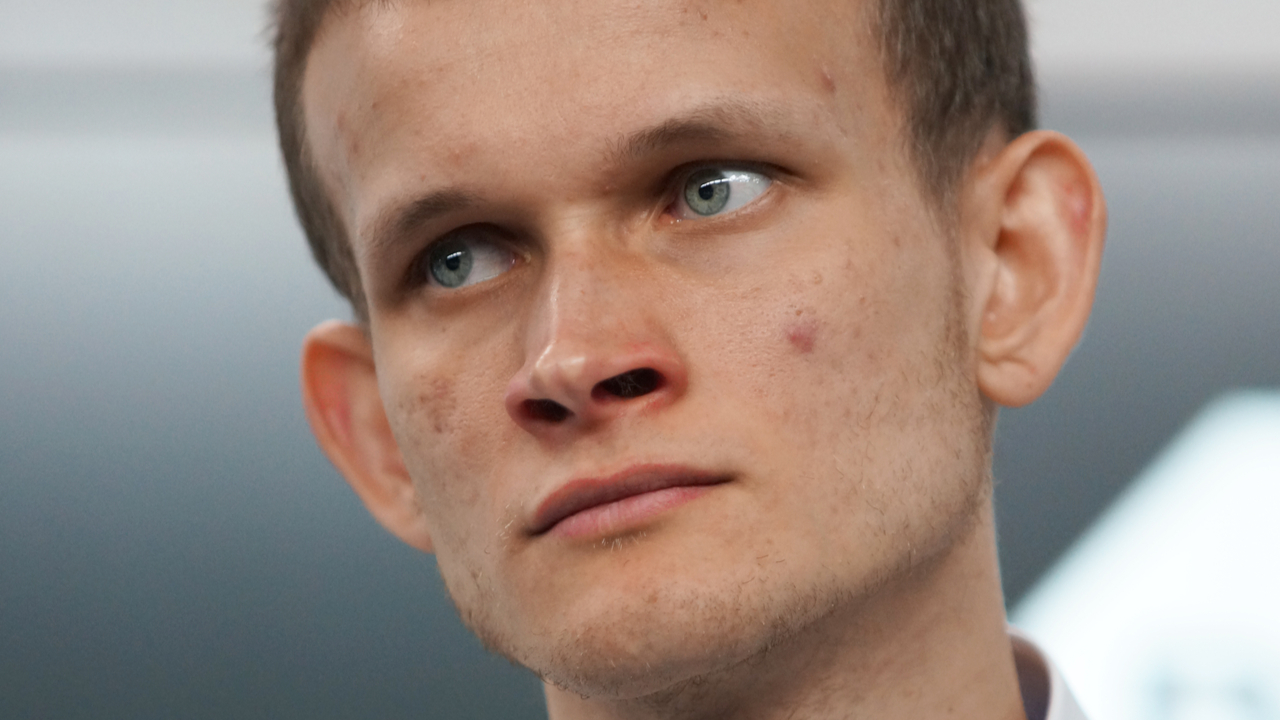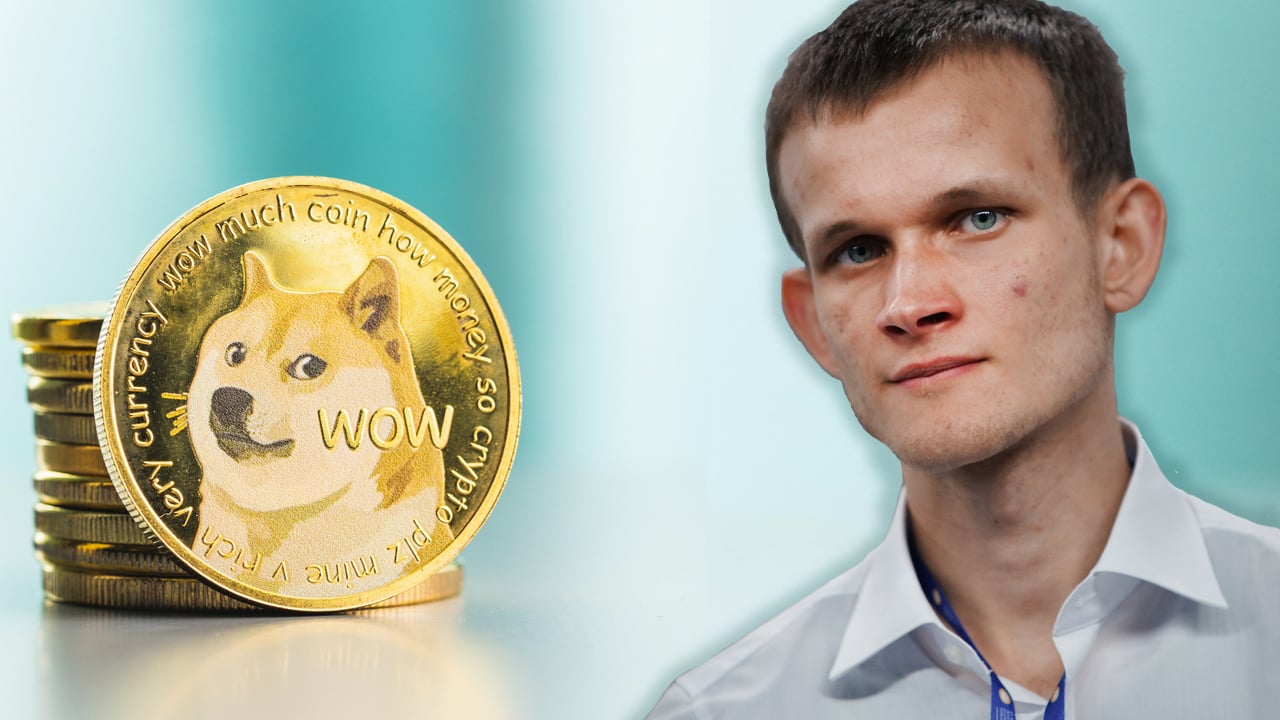 Ethereum co-founder Vitalik Buterin set up a pair of polls on Twitter asking his followers if 80% of all transactions and savings in the year 2035 are in one currency and it is not ether, which currency they would prefer it to be. He asked them to choose from a number of cryptocurrencies including bitcoin, […]
Ethereum co-founder Vitalik Buterin set up a pair of polls on Twitter asking his followers if 80% of all transactions and savings in the year 2035 are in one currency and it is not ether, which currency they would prefer it to be. He asked them to choose from a number of cryptocurrencies including bitcoin, […]
"Interdependence between chains could create a domino effect that impacts multiple ecosystems if a single chain were to be attacked, but that certainly isn't a reason to stop working on cross-chain innovations," Komodo's CTO Kadan Stadelmann told Cointelegraph.
Last week, Vitalik Buterin, Ethereum (ETH)'s co-founder, voiced his disapproval regarding the emergence of cross-chain bridges, citing security vulnerabilities due to their interdependency. In the days that followed however, developers working on cross-chain technologies largely dismissed his skepticism. In a statement to Cointelegraph, Kadan Stadelmann, chief technology officer of atomic swap blockchain Komodo, responded to Vitalik's critique:
"What we ultimately need is true decentralization. For example, instead of relying on one or two trusted bridges that have a single point of failure, it would be better to work towards a future where we have numerous bridges that are secure, trustless, and censorship-resistant."
Erik Ashdown, head of ecosystem growth at data analytics and blockchain indexer Covalent, concurred:
Vitalik is a smart cookie who’s clearly done his thinking about the state of bridges. However, his saying that bridges are a bad idea and won’t work is the equivalent of the Bitcoin community in 2015 saying Ethereum and smart contracts were a bad idea.
Stadelmann further reiterated that "cross-chain interoperability is the future" and that both multi-chain ecosystem networks like Polkadot (DOT) and Cosmos (ATOM), as well as atomic decentralized exchanges, could disrupt the economic size of Ethereum. In supporting the claim, Stadelmann cites expensive gas fees on the blockchain as to why users would prefer alternatives.
Nevertheless, there are unresolved issues surrounding cross-chain blockchains. Ashdown cites one example of the composability of a smart contract, where sending a token across one bridge will not have the same contract address if it crosses from another bridge. This means that anyone else sending a token across another bridge will not be able to interact with the original tokens sent from the main bridge.

In a two-hour Bankless podcast episode, the Ethereum co-founder discussed his plans to make Eth2 succeed.
Vitalik Buterin has walked listeners through a five-part roadmap on the latest Bankless podcast where he outlined the necessary steps for Ethereum to survive and thrive.
In order to achieve ultimate scalability and decentralization, Butalik claimed that Ethereum needs to be more agile and more lightweight in terms of blockchain data so that more people can manage and use it.
At the beginning of December, Buterin also published an article titled “Endgame” where he makes the case that all blockchains will ultimately converge in the future, while listing the tools that would allow for block verification to happen in a decentralized and censorship resistant way.
The first step is called the merge, referring to the full transition away from proof-of-work to proof-of-stake, taking place in the first half of 2022. Part two, called the surge, plans to give Ethereum increased scalability, massive bandwidth and throughput, particularly on zk-rollups. The merge and the surge are the most important upgrades, according to Buterin, to building out the Ethereum network.
When asked to evaluate Ethereum’s progress made so far in the past six years, Buterin asserted that "we are 50% of the way there" thanks to the launch of the Beacon chain, the London hard fork and even the rise of NFTs. But there is still a long way to go.
Once the merge and surge go through, and there is full sharding implementation, then it will supposedly be 80% complete. The roadmap, which is estimated to take another six years to complete, will lead to 100% optimization, according to Buterin.
The next phases include the verge, enabling more users to run nodes and essentially "democratizing access to the broadest number of participants possible to anyone and everyone who wants to verify the validity of the chain," said Buterin. Following the verge, are the purge and splurge phases, referring to the elimination of historical data and the addition of miscellaneous upgrades, respectively.
Related: Ethereum white paper predicted DeFi but missed NFTs: Vitalik Buterin
Buterin summarized his ideal scenario for an Eth2 that doesn't sacrifice decentralization for scalability:
“Leave the past in the past and create an Ethereum that actually becomes simpler and simpler over time.”
Buterin admitted that Etherum is “not yet the layer-one system that is ready for direct mass adoption,” while reiterating the need for layer-two scaling solutions and reduced transaction fees. He does, however, note the “amazing” progress that Ethereum has seen in layer-two scaling over the past year and the community behind it that is "willing to continue fighting for it."
In addition to scalability, another theme that Buterin emphasized is security and the safety measures around the upgrades. He compared blockchain building to the development of a city. Just as the police and the military work to defend their city or nation, so do blockchain users act as the security guards watching for attackers. And as cities expand or blocks get added to the chain, the more security that is needed.
Currently, Ethereum runs on about 2.6 megabytes per second of blockchain data, according to Buterin. He claimed that once Ethereum has the ability to add more bandwidth and increase the user base, "the more defenders will be able to run nodes and to verify that everything is going okay."
Related: 3 reasons why Ethereum can reach $5,000 in Q1
Ethereum stands as the world's second-largest cryptocurrency in terms of market capitalization, at $454 billion at the time of publication, making its journey to completion one of high-stakes. Below is a copy of the roadmap that Buterin posted to Twitter last month.
Happy birthday beacon chain!
— vitalik.eth (@VitalikButerin) December 2, 2021
Here's an updated roadmap diagram for where Ethereum protocol development is at and what's coming in what order.
(I'm sure this is missing a lot, as all diagrams are, but it covers a lot of the important stuff!) pic.twitter.com/puWP7hwDlx
 Vitalik Buterin, the co-founder of Ethereum, the second-biggest cryptocurrency by market cap, has reacted to some of his earlier beliefs in a new year’s tweetstorm. The developer touched on some subjects including the rise of cryptocurrency in Argentina and how stablecoins are thriving in the country, how ethereum scaling is still a pressing concern for […]
Vitalik Buterin, the co-founder of Ethereum, the second-biggest cryptocurrency by market cap, has reacted to some of his earlier beliefs in a new year’s tweetstorm. The developer touched on some subjects including the rise of cryptocurrency in Argentina and how stablecoins are thriving in the country, how ethereum scaling is still a pressing concern for […]
Buterin still believes that “the internet of money should not cost more than 5 cents per transaction” and highlighted Ethereum’s continued efforts to improve the blockchain’s scalability capabilities.
Rounding up the last decade, Ethereum co-founder Vitalik Buterin revisited his predictions made over the years, showcasing a knack for being right about abstract ideas than on-production software development issues.
Buterin started the Twitter thread by addressing his article dated Jul. 23, 2013 in which he highlighted Bitcoin's (BTC) key benefits — internationality and censorship resistance. Buterin foresaw Bitcoin’s potential in protecting the citizens’ buying power in countries such as Iran, Argentina, China and Africa.
However, Buterin also noticed a rise in stablecoin adoption as he saw Argentinian businesses operating in Tether (USDT). He backed up his decade-old ideas around the negative impacts of Bitcoin regulation.
My views today: sure, Bitcoin's decentralization would let it still *survive* under a super-hostile regulatory climate, but it could not *thrive*. Successful censorship resistance strategy requires a combination of technological robustness and public legitimacy.
— vitalik.eth (@VitalikButerin) January 1, 2022
The entrepreneur still believes that “the internet of money should not cost more than 5 cents per transaction” and highlighted Ethereum’s continued efforts to improve the blockchain’s scalability capabilities.
5. I should also add that the core *idea* of sharding has survived unscathed.
— vitalik.eth (@VitalikButerin) January 1, 2022
Blockchain 1.0: each node downloads everything, have consensus
BitTorrent: each node downloads only a few things, but no consensus
Ideal: BitTorrent-like efficiency but with blockchain-like consensus
“I liked altcoins before altcoins were cool,” added Buterin citing an article where he based this claim via three arguments: different chains optimize for different goals, costs of having many chains are low and need of an alternative in case the core development team is wrong.
On the flipside, Buterin backtracked on his support for Bitcoin Cash (BCH), stating that communities formed around a rebellion, even if they have a good cause, often have a hard time long term, adding that “they value bravery over competence and are united around resistance rather than a coherent way forward.”
11. Applications envisioned in the Ethereum whitepaper:https://t.co/6HCoO2CSW8
— vitalik.eth (@VitalikButerin) January 1, 2022
* ERC20-style tokens
* Algorithmic stablecoins
* Domain name systems (like ENS)
* Decentralized file storage and computing
* DAOs
* Wallets with withdrawal limits
* Oracles
* Prediction markets
“A lot correct (basically predicted "DeFi"), though incentivized file storage + compute hasn't taken off that much (yet?), and of course I completely missed NFTs.”
Concluding the findings, Buterin supported the instincts that helped him correct mistakes early on, stating: “On tech, I was more often right on abstract ideas than on production software dev issues. Had to learn to understand the latter over time.”
Related: Vitalik Buterin outlines ‘endgame’ roadmap for ETH 2.0
In early December, Buterin shared his vision for a “plausible roadmap” for ETH 2.0, suggesting “a second tier of staking, with low resource requirements” for distributed block validation.
Additionally, he proposed the introduction of fraud-proof or ZK-SNARKS that can serve as a cheaper alternative for users to check block validity. According to Buterin:
“[With these updates] We get a chain where block production is still centralized, but block validation is trustless and highly decentralized, and specialized anti-censorship magic prevents the block producers from censoring.”
 According to the Dogecoin Foundation, the organization is working with Vitalik Buterin on constructing proof-of-stake (PoS) capabilities for the Dogecoin network. The “uniquely Doge proposal” is aimed at bolstering a “community staking” version of the protocol. Dogecoin Foundation Discusses the Project’s ‘Trailmap’ On December 23, the Dogecoin Foundation’s official Twitter account tweeted about the digital […]
According to the Dogecoin Foundation, the organization is working with Vitalik Buterin on constructing proof-of-stake (PoS) capabilities for the Dogecoin network. The “uniquely Doge proposal” is aimed at bolstering a “community staking” version of the protocol. Dogecoin Foundation Discusses the Project’s ‘Trailmap’ On December 23, the Dogecoin Foundation’s official Twitter account tweeted about the digital […]
The new DOGE PoS version aims to allow anyone to get rewards for their contribution to running the network.
The Dogecoin Foundation, a non-profit organization behind the meme-based cryptocurrency Dogecoin (DOGE), is working on a staking mechanism in collaboration with Ethereum co-founder Vitalik Buterin.
The Foundation on Thursday released its Dogecoin Trailmap or a “dog-walk” that the Dogecoin Foundation is committed to exploring and which it believes would contribute to Dogecoin’s success.
As part of the trailmap, the Dogecoin Foundation is working with Buterin on building a “uniquely Doge proposal” for a “community staking” version of proof-of-stake (PoS).
Such a version would allow all Dogecoin users to stake their DOGE and get extra tokens for supporting the network, the Dogecoin Foundation said:
“[The PoS version] will allow everyone, not just the big players to participate in a way that rewards them for their contribution to running the network, and at the same time gives back to the whole community through charitable causes.”
As previously reported by Cointelegraph, the Dogecoin Foundation reestablished its project in August 2021 after six years of almost zero media activity. As part of the new team, the foundation listed advisory board members including Buterin, Dogecoin co-founder Billy Markus and Dogecoin core developer Max Keller. Tesla CEO and major DOGE fan Elon Musk’s interests were reportedly set to be represented by Neuralink CEO Jared Birchall.
“As you can imagine, setting off on such an adventure is not a small feat and we are still just getting started. We already have some influential friends on our side and a growing group of people who are getting ready to contribute development time to these open-source projects,” the latest post from the foundation reads.
Related: Dogecoin and Ether rank in top 10 news searches on Google in 2021
Dogecoin was founded in 2014 by software engineers Billy Markus and Jackson Palmer, who created DOGE’s payment system with an idea of a “joke.” The Dogecoin Foundation ceased to be active shortly after its founders left the project.